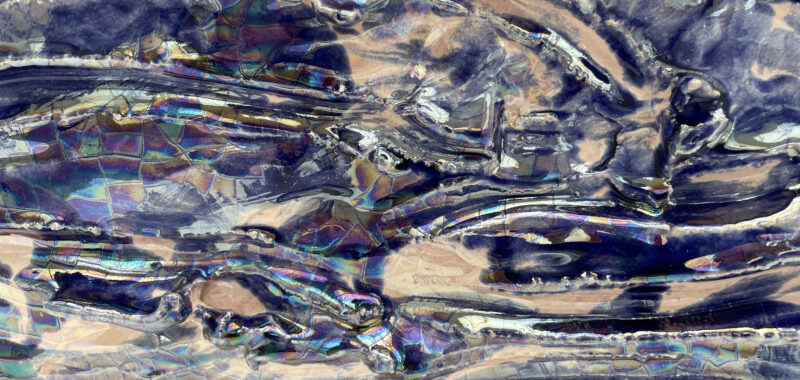VIENNA — When I think of Simone Fattal’s work, which I first saw in 2019 at MoMA PS1, I envision figures looming at a threshold of sculptural articulation: two long legs connected by an arch-like segment, something suspended between architecture and human likeness. The works seem to draw on ancient archetypes — yet Fattal has said that she doesn’t at all feel she is revisiting the past. “I am speaking of the present,” she told curator Cecilia Alemani in 2022, “but through forms which inhabit me and contain the past.” Indeed, the vocabulary of her work draws on ancient myths that testify to the contradictions of human nature and its unending cruelty, brutality, bravery, and grace. They force us to ask what, if anything, the heroic can mean — what Gilgamesh, Dhat al-Himma, or any other epic figure can mean — in our own warring times.
In metaphorS, a major exhibition of Fattal’s work currently on view at the Secession, balls of fired clay spells out are engraved in Arabic with the names of Allah (“The 99 Names,” 2020), anchoring a conversation among mostly recent works. Roughly the size of soccer balls, the six pieces invoking the names of the divine are placed on the floor at a distance from, yet in direct relation to, the five standing humanoid figures of the Guerrier series (Warrior, 2008), also of fired clay. It’s as though they were poised in an ancient game between mortal life and a heavenly power that can be “Beneficent” and “Most Merciful,” as two of the orbs read — but also “The Bringer of Death” and “The Destroyer.”

A number of collages and sculptures featuring spliced photographs of statues, ritual objects, landscapes, and archaeological sites reference the fragmented cultural spaces of regions host to ancient civilizations, which merge with the contemporary loci of Fattal’s own displacement. Born and raised in Damascus and Beirut, Fattal studied in Paris and later, fleeing the war in Lebanon, migrated to Sausalito, California, with her partner, the poet and painter Etel Adnan. There, she founded the Post-Apollo Press and published poetry and innovative, experimental literature.
Adnan’s influence shows in Fattal’s work. “IN OUR LANDS OF DROUGHT THE RAIN FOREVER IS MADE OF BULLETS” (2006, not in this exhibition), an ensemble of engraved basalt tiles listing the massacres of Palestinians from the 1948 Nakba, is titled after a poem by Adnan. But Fattal’s warriors also speak more generally to war’s violent uprooting and upheaval, the loss of the civilizations of Mesopotamia and the Mediterranean, and the broken transmission of culture and tradition to younger generations who have no memory of peace in their own lifetimes.
Some of the show’s most beautiful pieces are gleaming ceramic objects in blue, green, and pink hues resembling segments of waves glittering in the sunlight. They introduce an element of lightness and ethereal beauty, of the fragility of the passing moment and the inevitability of eternal change. Fattal has titled them Clouds (Faenza) (2023), adding a message of joyful hope to this pensive exhibition.



Simone Fattal: metaphorS continues at Vienna Secession (Friedrichstraße 12, Vienna) through September 8.

